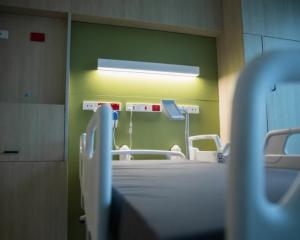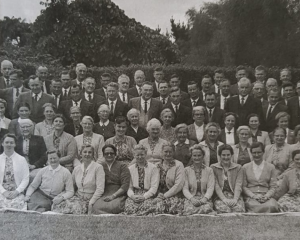The Government has set a vaccine target of 90% double doses for the eligible population in every district health board area before moving to a nationwide "traffic light" system which will replace the current alert level system and national lockdowns. However, the Government could still use localised lockdowns.
The traffic light system makes use of vaccine certificates.
- NZ ‘dangerously underprepared’
- Woman at heart of Northland border breach hits out at allegations
- Frustration grows about Covid alert level not dropping for South Island
However, Auckland is set to move into the new framework when 90% of eligible population in each of the three DHBs are fully vaccinated.
Prime Minister Ardern said the Government was also open to relaxing restrictions early in the South Island.
"In thinking about these settings and when the country moves into them we did specifically think about the South Island.
"We also thought about scenarios where we are close to the targets for each DHB but possibly stuck a small way shy of where we want to be to transition.
"That's why on the 29th of November Cabinet will review the progress that Auckland has made and the rest of the country to see if anything needs to change."
"We are open to moving the South Island before the rest of the country if all the DHBs in the south hit their targets before others."
Asked if areas with low vaccination rates in the South Island could hold back the removal of restrictions for the rest of the island, Ardern said: "We are all in this together."
"We all know that the thing that actually prevents us from having to use restrictions ... is by us having a high vaccination rate across the country."
The Government would look at providing extra support for regions which were lagging behind on vaccination rates.
South Island DHB double vaccination rates as at Oct 19 (rank out of 17 DHBs)
- Nelson-Marlborough -71.58% (2)
- Southern - 70.58% (3)
- South Canterbury - 66.93% (5)
- Canterbury - 62.42% (11)
- West Coast - 60.8% (12)
In a suite of announcements that establish a pathway out of restrictions the Government is also providing up to $940 million per fortnight to support businesses through the challenging period, particularly those in Auckland. A new $120m fund has also been established to help lift Māori vaccination rates.
Aucklanders will "absolutely" be able to share Christmas with family, Ardern said.
However, she warned those who aren't vaccinated they won't be able to share in some of the freedoms other Kiwis enjoy.
Businesses will be able to continue to operate at each of the risk levels, and each setting can be used in a highly targeted and localised way, Ardern says.
How traffic light system will work
Red
Red is for when the virus is spreading in a way that threatens the most vulnerable and could overwhelm the health system.
Education will be open but with public health measures, masks will be needed and there will be caps and physical distancing requirements.
At the red level someone without a vaccine certificate cannot dine at a restaurant, attend a gathering of more than 10 people or go to the gym.
Auckland will move into red when each of its three DHBs hit the 90 per cent target.
"You are so close. Right now you're just 16,000 vaccines away from every DHB hitting 90 per cent for first doses."
Orange
The rest of the country, including the South Island, will move to orange when every other DHB hits the 90 per cent target.
Orange means no limits if vaccine certificates are used for hospitality, gatherings and events.
Limits will apply if no vaccine certificates are used.
Green
Green will have limits if no vaccine certificates are used for hospitality, gatherings and events.
Ardern said the new framework was about being able to live our lives as safely as possible.
Ardern said New Zealand had carved its own path for much of the past 18 months, and it had been world-leading.
But the vaccine means that there is a pathway forward.
Freedoms promised for fully vaccinated New Zealanders
The new traffic light framework will mean everyday freedoms for fully vaccinated Kiwis, rather than a reliance on lockdowns.
She said she didn't expect the Auckland border would stay long term, however it is needed now.
"Vaccinations are our armour," Ardern said when announcing the target and new traffic light system.
"They help keep us safe. If you want summer... get vaccinated. If you want a haircut, get vaccinated. If you want to go to a gym or a sports event, get vaccinated. If you're not vaccinated, there will be everyday things that you will miss out on," Ardern said.
Ardern said not all countries have been able to open up with high levels of vaccination.
The goal was to minimise and protect, and to keep the spread of the virus as low as possible.
Public health teams will still try to stamp out outbreaks as much as possible.
She said everyone - especially Aucklanders - deserved to know when more freedoms will be available.
She said a 90 per cent target for the eligible population for each DHB would mean "more equitable outcomes".
Business support package
Finance Miniter Grant Robertson said he was well aware of the impact of the lockdown in Auckland and Waikato.
The resurgence support payment will be doubled, up to $43,000 - the first applications will open on November 12.
They will be paid fortnightly rather than every three weeks.
Lifting Māori vaccination rates
The Government has established a $120 million fund to accelerate Māori vaccination rates and support communities to prepare for the implementation of the new Covid-19 Protection Framework.
The new Māori Communities Covid-19 Fund will directly fund Māori, Iwi, community organisations and providers to deliver local vaccination initiatives for whānau, and support Māori and communities to prepare for the new protection framework.
The fund will assist in reaching Māori not yet vaccinated including rangatahi, whānau without permanent housing, whānau in rural and remote locations, and whānau not well connected to health services. Local Iwi, Māori organisations and providers are best placed to reach and support these groups.
$60 million will go towards accelerating Māori vaccination rates and a further $60m will support Māori and iwi-led initiatives to protect their communities against Covid-19.
"While more Māori have been vaccinated in recent weeks, Māori are still lagging behind most New Zealanders, particularly in the younger age groups," Associate Minister for Health (Maori Health) Peeni Henare said.
"We need to pull out all the stops to ensure whānau are protected when the new protection framework is put in place. We know the recent lift in vaccination rates is the direct result of funding Māori providers and of Māori leadership efforts at a regional and national level. We need this to continue.
"From hāngi and vouchers, walk-in clinics and vax buses, partnerships with iwi, local communities and businesses, communities going door-to-door, vaccinations on sports fields and at kura and many more initiatives - we've seen what works and this fund will support more of it," Henare said.












